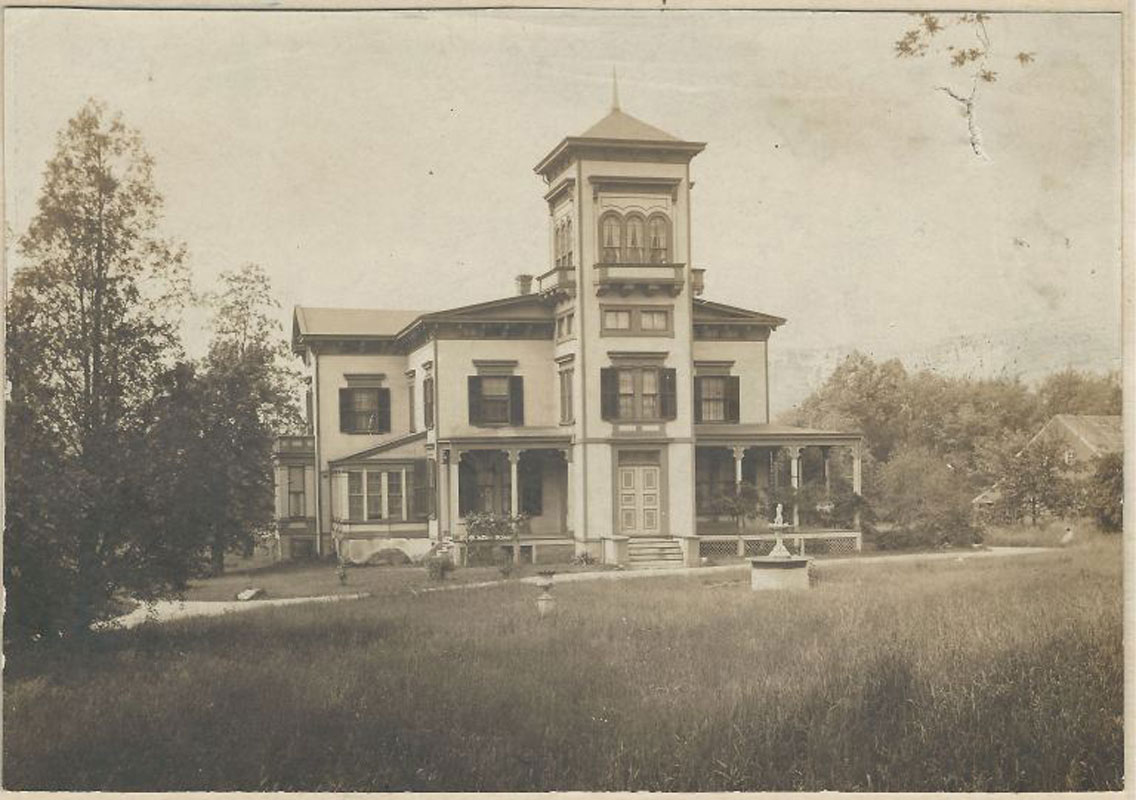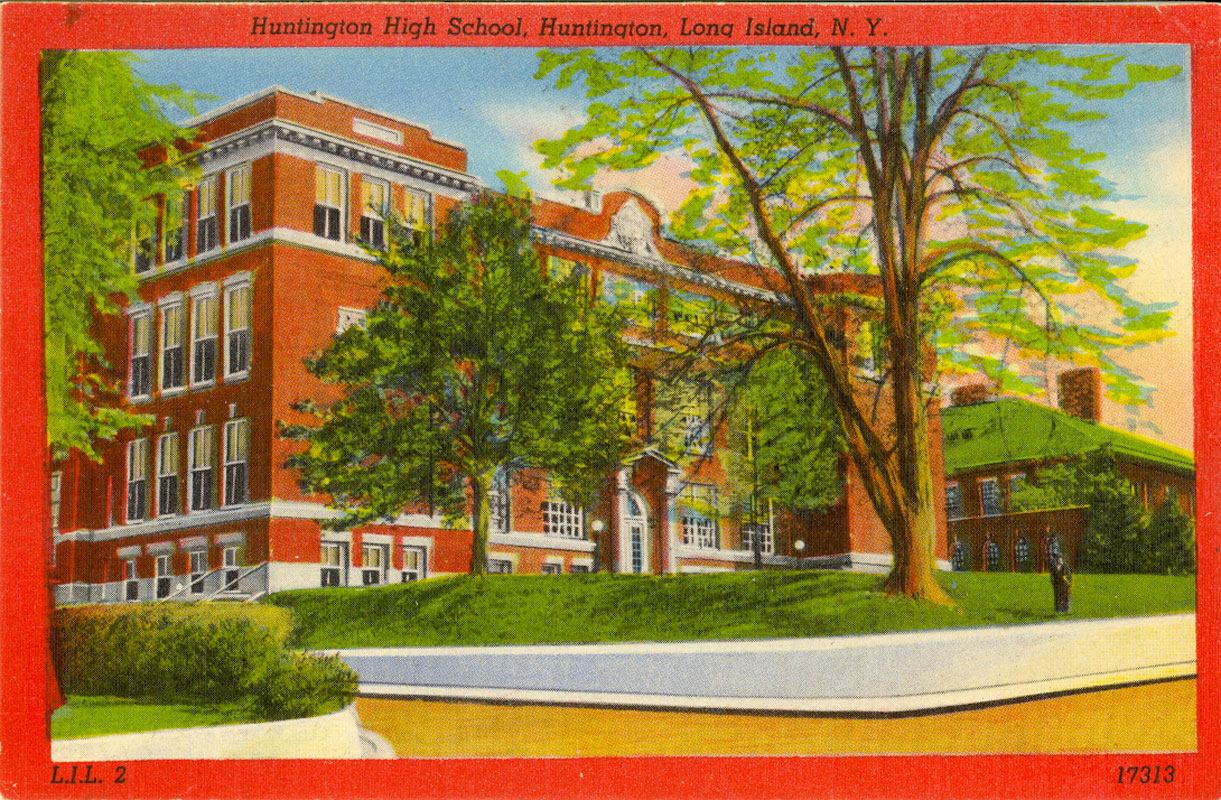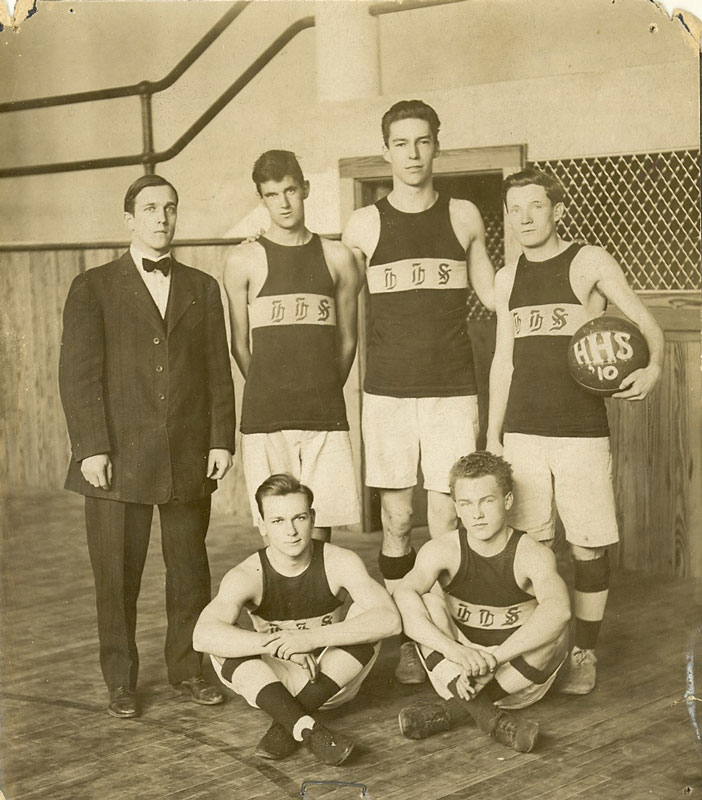A few years after the town was settled a group of community members came together to hire Jonas Holdsworth as the first school teacher in Huntington. Given a four year contract, he commenced class on February 11, 1657 in a private home. Huntington UFSD traces its origins to that day, 364 years ago.
Few communities in the country can match such a long association with public education. Teachers came and went, but classes continued without interruption. The first public schoolhouse was erected in 1660. Precise records are sparse, although there is documentation that Robert Macbeth was hired to teach in 1713 and Samuel Plum was retained in 1728.
At a town meeting on May 3, 1763, six men were “chosen to provide a master and take care of the new school house,” according to a written record that still exists. In essence, this was Huntington’s first school board. It is believed that the school building was located in the area of East Street or along today’s Park Avenue.
Additional schoolhouses were built, including one at the harbor in Halesite and another “on the road to Woodbury.” These were little more than one room buildings with a fireplace.
“In 1793, fifty leading citizens united to build what was then known as Huntington Academy,” according to a published report. The two story building was erected on the site of the current Huntington Town Hall on Main Street.
“This academy was designed to afford such instruction as would fit the youth for college,” stated a January 1941 history shared with district teachers in a handbook. The building stood for more than 50 years until it was demolished and the larger Union School was constructed in its place.
Huntington UFSD began to take official shape on November 28, 1856 with a request to the state legislature to form a school district. Legislation granting permission was passed on April 13, 1857. In 1866, State Education Commissioner Thomas S. Mount “decreed” the district be known as Huntington Union Free School District No. 3. (Note: The numbering system was discontinued several decades ago.)
The Huntington Academy was demolished and a new, larger building was erected in 1858 and named the Union School. Its first class of six members was graduated in 1862. During the early years of its existence, enrollment totaled about 300 students with the “primary and elementary” departments on the first floor; “intermediate and grammar” departments on the second floor and the high school program on the third floor. The school had a 40 volume encyclopedia collection and library consisting of 870 books.
“The course of study was arranged to be completed in 12 years; the pupil entering at five and graduating at the age of 17 years,” according to a district handbook published in 1940. There was no kindergarten program at the time.
Between 1862 when the first class of six received diplomas to 1882, 71 students completed the course of study with honors. Enrollment reached 500 by 1882. In 1870 the Union School was expanded and in 1897 it was renamed Huntington High School.
In 1888 a new red brick building was built on the same plot of land as the Union School. The new structure was named the Main Street School and featured elementary education classrooms. It was expanded in 1904. (The building is still standing and used as part of the Huntington Town Hall complex.)
Rochester native Robert K. Toaz was hired in 1906 as the district’s first superintendent of schools. He also served as the high school principal.
In 1906, the district opened Station School on School Street in Huntington Station. In 1908, the old Union School building was demolished and in its place a modern, red brick building was erected. It opened in January 1910 as the new Huntington High School. Theodore Roosevelt and a group of companions rode on horseback from Oyster Bay on a Sunday morning to visit the site of the newly completed building.
While the new high school was under construction in 1908-09, students attended classes in the Prime mansion across the street in what is now Heckscher Park.
In 1926/27 the building was expanded, including the addition of a new gymnasium (the old gym was converted to a cafeteria) and an auditorium.
Huntington UFSD opened both Lincoln Avenue Elementary School on E. 9th Street in Huntington Station (across from St. Hugh of Lincoln Church) and Woodbury Avenue School in 1923. Nathan Hale Elementary School opened on Bay Avenue in Huntington Bay in 1928.
The district opened the first junior high school in Suffolk County in September 1939. Robert K. Toaz Junior High School was constructed as a Great Depression era Works Progress Administration project. The federal government contributed more than $336,000 toward the project’s cost of $748,957.
Village Green Elementary School opened in 1952 with Flower Hill, Washington and Southdown Elementary Schools all opening in 1954. A new Huntington High School opened in November 1958. Robert L. Simpson High School (as Huntington High School was known from July 1950 to November 1958) was converted to a junior high school and reopened in 1961.
Jefferson Elementary School opened in 1962 with J. Taylor Finley Middle School opening in 1965. Huntington Elementary School opened in 1968.
On the fourth day of the 1965 school year, the Huntington School District boasted an enrollment of 8,265 students spread across 13 different school buildings. By contrast, the district’s current enrollment stands at about 4,500.
The 1965 enrollment figures were contained in a “revised preliminary plan” compiled by the Town of Huntington’s Office of Urban Renewal, which was located at 75 Broadway in Huntington Station.
On Monday, September 13, 1965, the district had 233 kindergarten students in leased quarters. There were an additional 445 kindergarten youngsters attending seven other district elementary schools for a total kindergarten enrollment of 678.
Flower Hill School had an enrollment of 594 students while Village Green School housed 586 youngsters. Southdown School had 543 students filling its classrooms. Jefferson School’s enrollment was 521 with 506 youngsters at Washington School. Roosevelt School had 387 students while Nathan Hale School’s enrollment stood at 342. Lincoln School had 293 students while Woodbury Avenue School was educating 272 youngsters. J. Taylor Finley Elementary School (a wing of the junior high school) enrolled 331 sixth graders.
Southdown, Flower Hill, Village Green, Washington, Roosevelt and Nathan Hale all housed grades K-6. Jefferson, Lincoln and Woodbury Avenue serviced grades 1-6. Finley Elementary School’s sixth grade enrollment came from Flower Hill (21 students), Jefferson (58 students), Lincoln (46 students), Southdown (102 students), Washington (51 students) and Woodbury Avenue (53 students).
There were ten elementary schools and one kindergarten building with five morning and five afternoon sections in the half-day program. Total K-6 enrollment stood at 4,608.
Huntington also had three junior high schools with each housing grades 7-9. Robert K. Toaz Junior High School had 705 students, while Robert L. Simpson Junior High School had an enrollment of 693. In its first year of operation, J. Taylor Finley Junior High School had 532 students in grades 7-9. The district’s total junior high school enrollment in grades 7-9 was 1,930 with 639 seventh graders, 650 eighth graders and 641 ninth graders.
Huntington High School housed grades 10-12 in 1965. Its enrollment consisted of 1,727 students, including 543 sophomores, 590 juniors and 641 seniors.
The Huntington School District’s secondary grade level enrollment was 3,657 students spread across six grades.
Since September 1965 the district closed and sold off Lincoln, Nathan Hale, Village Green and Woodbury Avenue elementary schools as well as Robert K. Toaz and Robert L. Simpson junior high schools. Roosevelt School was demolished as part of the town’s Urban Renewal program with the federal government paying a substantial percentage of the costs to erect Huntington Elementary School on an enlarged site. The Roosevelt site amounted to about three acres while Huntington El was built on a 13 acre parcel, with almost all of the additional land coming via eminent domain proceedings.
The aging Roosevelt School was closed in January 1967 upon the completion Nathaniel Woodhull Elementary School, which opened on the following Monday with the entire Roosevelt student body moving over to the new building. Roosevelt was demolished the following year. Huntington El opened in September 1969, originally serving as a junior high school while Toaz was renovated and a multi-story sixth grade wing added. When Toaz reopened, Huntington El educated students in grades K-6.
Lincoln School still stands and looks nearly exactly as it did when it served district students. It is now known as Lincoln Farms and features approximately 30 apartments. Nathan Hale School also appears nearly identical on the outside. It has been converted to condominiums.
Village Green School has been substantially remodeled for use by the town and the Cinema Arts Centre, although many of its classrooms are intact as are its athletic fields. Many of the school’s original windows in the rear of the building are also still in place. Woodbury Avenue School was completely demolished. A condominium complex was built on the site. A later decline in enrollment eliminated the need for leased kindergarten facilities.
Robert K. Toaz Junior High School was leased and then sold to Touro Law School. It is now owned by the Good News Church. The building’s current appearance is identical to what it looked like in 1970 and much of its interior, including its distinctive library and gym, student lockers, showcases and even signs indicating “nurse’s office” are still in place. Robert L. Simpson Junior High School was sold to the town for $1. It is now used as Huntington Town Hall.




